This year, 2013, marks the 20th year dengue fever has had a presence in Costa Rica. In 2012, Costa Rica doubled the number of dengue cases from 2011. Thankfully, there were no deaths. With more than one-third of the world’s population living in areas at risk for transmission, dengue infection is a leading cause of illness and death in the tropics and subtropics. This global map shows that other countries with reported cases of dengue surround Costa Rica.
Here in Bahía Ballena, the Ministry of Health is doing it’s best to take preventive measures in protecting its people against dengue. I had the opportunity last week to travel around with Milton Lobo, a worker for the Ministerio de Salud for the Oso Canton, to investigate houses for possible signs of dengue. It was only the week before that I had met Milton when he came to my casita to inspect for dengue. It was at my casita that I was able to learn more about his work inspecting houses for dengue in Bahía Ballena. After explaining the Geoporter project, we set up a meting to use GPS to map the houses he is inspecting.

Milton is responsible for overseeing and inspecting vectors of disease transmission for a rather large area of Costa Ballena, including Bahía Ballena, Uvita, Cortes and Palmar Norte. He must travel and visit every house in the towns and inspect them for signs of dengue. The routine of visiting houses here is a bit different than in the U.S., where here, Milton doesn’t inspect the property if no one is home. Someone must be home for him to inspect the property. This makes things a bit interesting when there are several houses here in town that are seasonal houses or weekend casitas.
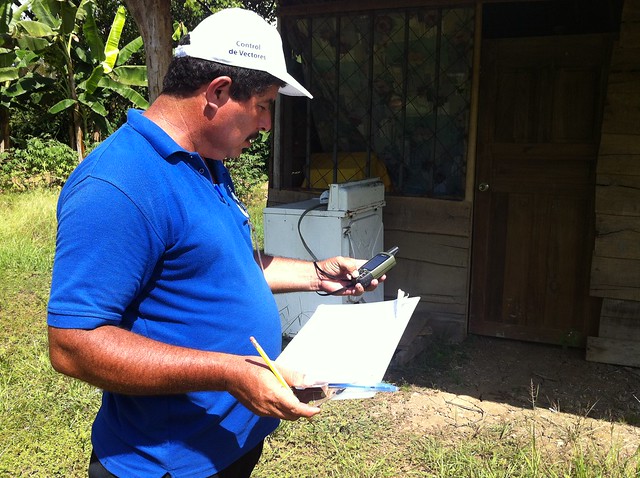
After always seeking permission from the homeowner, he works his way around the house, starting to the right. He is looking for standing water that is close to the home. Not just any standing water, but standing water in containers that have solid surfaces underneath, such as buckets, old metal containers, tires, or toilets that are no longer used in houses. The solid containers are a prime location for female mosquitos, the transmitters of dengue, to lay their eggs. Without solid surface containers to hold water the mosquitos will search elsewhere to lay their eggs.

At one house, we encountered an old toilet that had standing water. Now began the fun part, inspecting the water for mosquito eggs and larva of a specific species. There are many species of mosquitos, yet only one of concern for dengue is Aedes. Milton, who has been working this job for over 12 years said it has become much easier for him to identify those species that carry dengue and malaria. When a larva mosquito is in standing water, if it is at a 45-degree angle, it is not a carrier of dengue. However, if the mosquito is vertical in the water, and also swims in a figure 8 fashion, it is the species to transmit dengue.
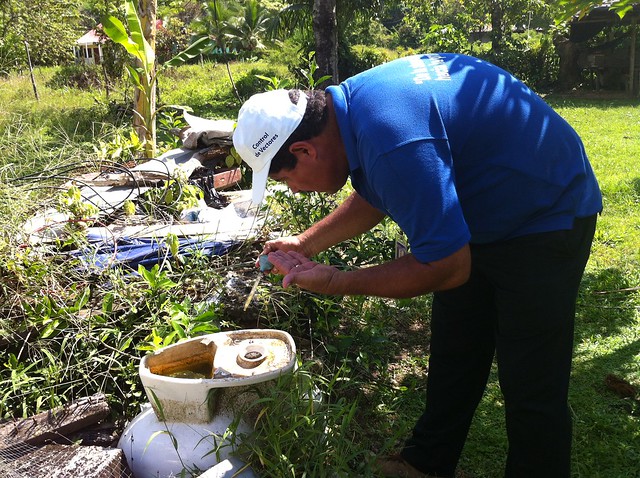
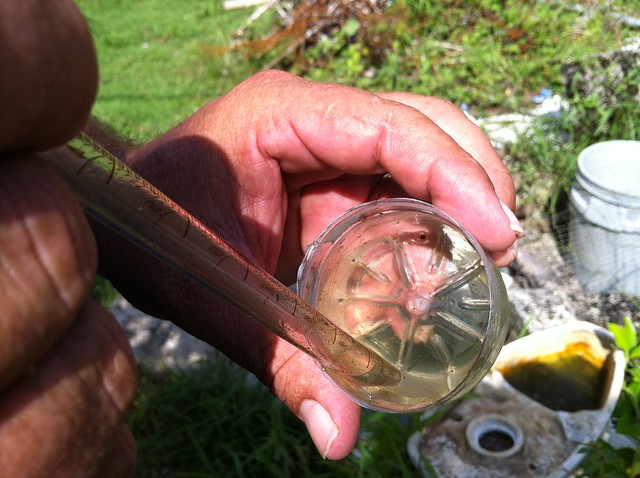
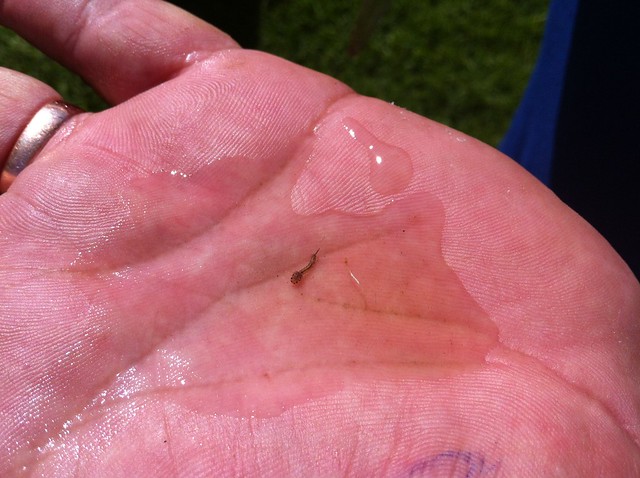
While the toilet with standing water did contain eggs and larva, the larva were angled at 45 degrees in the water and therefore not a carrier of dengue. However, to be on the safe side, ever container of standing water, Milton placed a pebble or sprinkled some powder to ensure that the water would not be a habitable environment for eggs or larva.
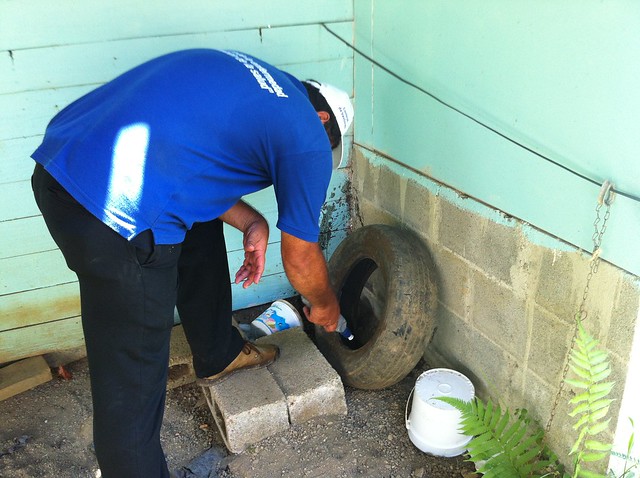
During our adventure, Milton quickly picked up GPS and mapped every house we inspected and added the waypoint number to his inspection sheet. We covered two manzanas (or blocks), but as Milton says, there are some houses that take longer to inspect. By mapping those houses that are closed and need revisited, or those that have standing water, we will be able to see if there is an area of town that has several house close together that have standing water in solid containers. The best action is preventative action.
